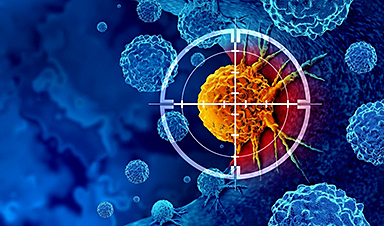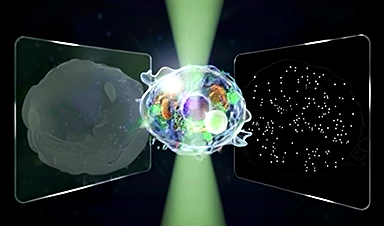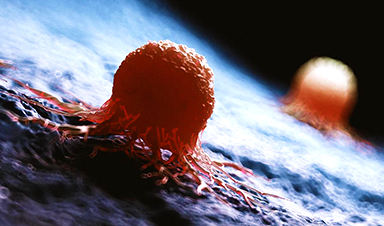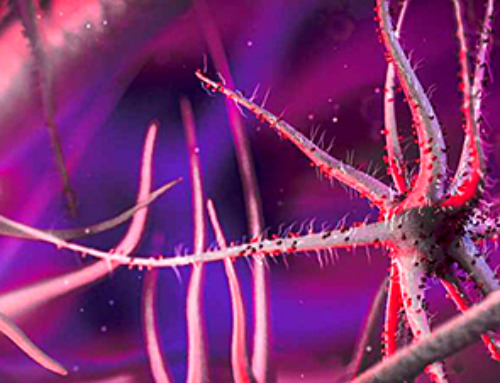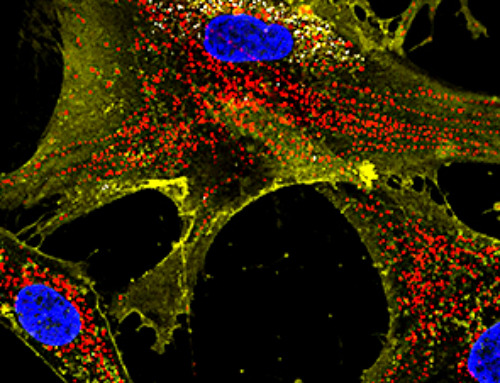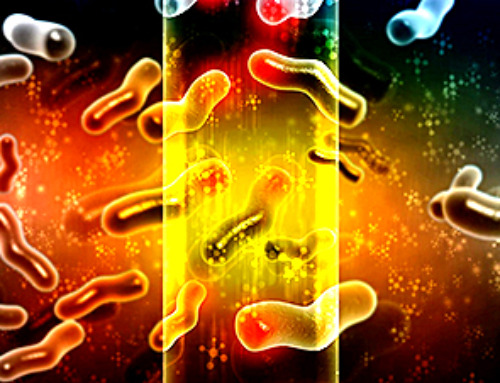A new drug targets RAS-PI3Kα pathways without harmful side effects. It was developed using high-performance computing and AI.
A new cancer drug candidate, developed through a collaboration between Lawrence Livermore National Laboratory (LLNL), BridgeBio Oncology Therapeutics (BBOT), and the Frederick National Laboratory for Cancer Research (FNLCR), has shown the ability to inhibit tumor growth without causing a major side effect often seen in similar therapies.
This compound, named BBO-10203, has demonstrated early success in clinical trials by interrupting a crucial interaction between two cancer-promoting proteins, RAS and PI3Kα. Unlike previous drugs targeting this pathway, BBO-10203 does not induce hyperglycemia (elevated blood sugar levels), a complication that has previously limited treatment options. The research, published in Science, represents a significant advance for patients facing aggressive cancers that have been difficult to treat.
The development of BBO-10203 combines the power of Department of Energy (DOE) high-performance computing with artificial intelligence and biomedical innovation. At the core of the effort is LLNL's Livermore Computer-Aided Drug Design (LCADD) platform, which integrates machine learning, AI, and physics-based simulations. This system, supported by DOE supercomputers such as Ruby and Lassen, allows scientists to model and evaluate drug behavior before any physical compound is created.
"This is a precise, targeted strike on a long-standing cancer vulnerability," said LLNL Biochemical and Biophysical Systems Group Leader Felice Lightstone, co-author of the study. "What's especially exciting is that this was achieved using a computational pipeline, reducing what traditionally takes many years."
A "breaker" disrupting the RAS-PI3Kα pathway
BBO-10203 functions by interrupting the connection between two proteins commonly involved in promoting cancer growth. These proteins, which belong to the RAS and PI3K signaling pathways, are often mutated in cancer and have proven extremely difficult to target with precision and safety. According to the research team, what sets BBO-10203 apart is its ability to shut down the cancer-related signaling without disrupting normal blood sugar regulation—a side effect that has limited the success of similar drugs.
In laboratory experiments and preclinical animal studies, BBO-10203 was shown to inhibit tumor growth in multiple cancer types, including those characterized by HER2 overexpression, PIK3CA mutations, and KRAS mutations. The compound also boosted the performance of existing treatments for breast, lung, and colorectal cancers, indicating potential for use in combination therapies to enhance patient outcomes.
The creation of BBO-10203, nicknamed the "breaker" for its ability to sever the RAS-PI3Kα interaction, began with a 2018 initiative led by scientists at FNLCR. It builds on extensive structural biology research aimed at characterizing and modeling how these two proteins interact—an essential step toward designing a compound capable of selectively disrupting that interaction in cancer cells.
"Our six-year journey from concept to clinic addresses the urgent need to target the interaction between the two most common cancer drivers: RAS and PI3Kα," said Dhirendra Simanshu, lead author and principal scientist at FNLCR. "We discovered a first-in-class way to block this interaction in tumors without affecting insulin signaling. This achievement highlights how strategic partnerships among BBOT, LLNL, and the National Cancer Institute's RAS Initiative at FNLCR can translate structural biology insights into novel therapies, advancing cancer treatment from bench to bedside."
FNLCR researchers began with a "molecular glue" compound that stabilized the RAS–PI3Kα interaction and enabled detailed structural studies. Recognizing that this interaction could also be disrupted, they conceived the idea of converting the glue compound to breaker, and through close collaboration with BBOT and LLNL, the team designed key features of the molecule to block the binding interface rather than stabilize it.
With early compounds and insights on more than 50 crystal structures the FNLCR team solved during lead optimization, BBOT and LLNL's LCADD platform iteratively refined the molecule for potency, selectivity, and pharmacokinetics. This work transformed the compound into a therapeutic candidate, targeting a previously "undruggable" protein interface and laying the foundation for BBO-10203's development.
HPC-driven drug discovery: from molecule to medicine
The rapid design and development of BBO-10203 is part of a larger effort to apply DOE computing capabilities and AI/ML for drug discovery. In six years, the LLNL/BBOT/FNLCR team has advanced three small-molecule cancer drug candidates into clinical trials, BBO-10203 being the second to reach patients. The first — BBO-8520 — entered human trials in 2024 and targets KRASG12C mutations in non-small cell lung cancer.
"This collaboration represents the future of cancer drug discovery — faster, smarter, and more direct," said Pedro Beltran, chief scientific officer of BBOT and co-lead author of the paper. "We're excited by these results and the potential to expand treatment options for patients with numerous types of previously undruggable cancers."
BBO-10203's Phase 1 trial involves individuals with advanced tumors, including breast, colorectal, and lung cancers — some of the most common cancers driven by RAS protein mutations. The goal is to evaluate the drug's safety, dosage, and preliminary efficacy.
Traditional cancer-drug development is time and energy-intensive, costly, and fraught with setbacks. But with a computational-first approach combining AI, simulatio,n and structural modeling, researchers were able to dramatically reduce the cost and timeline of drug development to design molecules before synthesizing them in the lab and increase the odds of success.
"This is about moving faster without cutting corners," Lightstone said. "We're combining cutting-edge DOE supercomputing with state-of-the-art chemistry and biology, and we're delivering results."
The computational work was supported by LLNL's Institutional Computing Grand Challenge Program, with experimental validation carried out in collaboration with BBOT and FNL. Researchers at FNLCR also leveraged DOE user facilities, including the Advanced Photon Source at Argonne National Laboratory, to guide structure-based design.
As clinical data from BBO-10203 continues to emerge, researchers are optimistic about its potential to set a new standard for PI3Kα pathway inhibitors and hope the compound could represent a new class of cancer therapeutics that avoids the toxicities of previous generations.
"We've built a powerful engine for drug design — and we're just getting started," Lightstone said.
Reference: "BBO-10203 inhibits tumor growth without inducing hyperglycemia by blocking RAS-PI3Kα interaction" by Dhirendra K. Simanshu, Rui Xu, James P. Stice, Daniel J. Czyzyk, Siyu Feng, John-Paul Denson, Erin Riegler, Yue Yang, Cathy Zhang, Sofia Donovan, Brian P. Smith, Maria Abreu-Blanco, Ming Chen, Cindy Feng, Lijuan Fu, Dana Rabara, Lucy C Young, Marcin Dyba, Wupeng Yan, Ken Lin, Samar Ghorbanpoorvalukolaie, Erik K. Larsen, Wafa Malik, Allison Champagne, Katie Parker, Jin Hyun Ju, Stevan Jeknic, Dominic Esposito, David M. Turner, Felice C. Lightstone, Bin Wang, Paul M. Wehn, Keshi Wang, Andrew G. Stephen, Anna E. Maciag, Aaron N. Hata, Kerstin W. Sinkevicius, Dwight V. Nissley, Eli M. Wallace, Frank McCormick and Pedro J. Beltran, 12 June 2025, Science.
DOI: 10.1126/science.adq2004
LLNL's effort began with a Cooperative Research and Development Agreement (CRADA) with Theras/BBOT aimed at advancing discovery of novel RAS inhibitors for the treatment of cancer. The CRADA and license agreement with BBOT for the drug candidate were negotiated through LLNL's Innovation and Partnerships Office by Business Development Executive Yash Vaishnav.
Never miss a breakthrough: Join the SciTechDaily newsletter.
News
Novel mRNA therapy curbs antibiotic-resistant infections in preclinical lung models
Researchers at the Icahn School of Medicine at Mount Sinai and collaborators have reported early success with a novel mRNA-based therapy designed to combat antibiotic-resistant bacteria. The findings, published in Nature Biotechnology, show that in [...]
New skin-permeable polymer delivers insulin without needles
A breakthrough zwitterionic polymer slips through the skin’s toughest barriers, carrying insulin deep into tissue and normalizing blood sugar, offering patients a painless alternative to daily injections. A recent study published in the journal Nature examines [...]
Multifunctional Nanogels: A Breakthrough in Antibacterial Strategies
Antibiotic resistance is a growing concern - from human health to crop survival. A new study successfully uses nanogels to target and almost entirely inhibit the bacteria P. Aeruginosa. Recently published in Angewandte Chemie, the study [...]
Nanoflowers rejuvenate old and damaged human cells by replacing their mitochondria
Biomedical researchers at Texas A&M University may have discovered a way to stop or even reverse the decline of cellular energy production—a finding that could have revolutionary effects across medicine. Dr. Akhilesh K. Gaharwar [...]
The Stunning New Push to Protect the Invisible 99% of Life
Scientists worldwide have joined forces to build the first-ever roadmap for conserving Earth’s vast invisible majority—microbes. Their new IUCN Specialist Group reframes conservation by elevating microbial life to the same urgency as plants and [...]
Scientists Find a Way to Help the Brain Clear Alzheimer’s Plaques Naturally
Scientists have discovered that the brain may have a built-in way to fight Alzheimer’s. By activating a protein called Sox9, researchers were able to switch on star-shaped brain cells known as astrocytes and turn them into [...]
Vision can be rebooted in adults with amblyopia, study suggests
Temporarily anesthetizing the retina briefly reverts the activity of the visual system to that observed in early development and enables growth of responses to the amblyopic eye, new research shows. In the common vision [...]
Ultrasound-activated Nanoparticles Kill Liver Cancer and Activate Immune System
A new ultrasound-guided nanotherapy wipes out liver tumors while training the immune system to keep them from coming back. The study, published in Nano Today, introduces a biodegradable nanoparticle system that combines sonodynamic therapy and cell [...]
Magnetic nanoparticles that successfully navigate complex blood vessels may be ready for clinical trials
Every year, 12 million people worldwide suffer a stroke; many die or are permanently impaired. Currently, drugs are administered to dissolve the thrombus that blocks the blood vessel. These drugs spread throughout the entire [...]
Reviving Exhausted T Cells Sparks Powerful Cancer Tumor Elimination
Scientists have discovered how tumors secretly drain the energy from T cells—the immune system’s main cancer fighters—and how blocking that process can bring them back to life. The team found that cancer cells use [...]
Very low LDL-cholesterol correlates to fewer heart problems after stroke
Brigham and Women's Hospital's TIMI Study Group reports that in patients with prior ischemic stroke, very low achieved LDL-cholesterol correlated with fewer major adverse cardiovascular events and fewer recurrent strokes, without an apparent increase [...]
“Great Unified Microscope” Reveals Hidden Micro and Nano Worlds Inside Living Cells
University of Tokyo researchers have created a powerful new microscope that captures both forward- and back-scattered light at once, letting scientists see everything from large cell structures to tiny nanoscale particles in a single shot. Researchers [...]
Breakthrough Alzheimer’s Drug Has a Hidden Problem
Researchers in Japan found that although the Alzheimer’s drug lecanemab successfully removes amyloid plaques from the brain, it does not restore the brain’s waste-clearing system within the first few months of treatment. The study suggests that [...]
Concerning New Research Reveals Colon Cancer Is Skyrocketing in Adults Under 50
Colorectal cancer is striking younger adults at alarming rates, driven by lifestyle and genetic factors. Colorectal cancer (CRC) develops when abnormal cells grow uncontrollably in the colon or rectum, forming tumors that can eventually [...]
Scientists Discover a Natural, Non-Addictive Way To Block Pain That Could Replace Opioids
Scientists have discovered that the body can naturally dull pain through its own localized “benzodiazepine-like” peptides. A groundbreaking study led by a University of Leeds scientist has unveiled new insights into how the body manages pain, [...]
GLP-1 Drugs Like Ozempic Work, but New Research Reveals a Major Catch
Three new Cochrane reviews find evidence that GLP-1 drugs lead to clinically meaningful weight loss, though industry-funded studies raise concerns. Three new reviews from Cochrane have found that GLP-1 medications can lead to significant [...]










